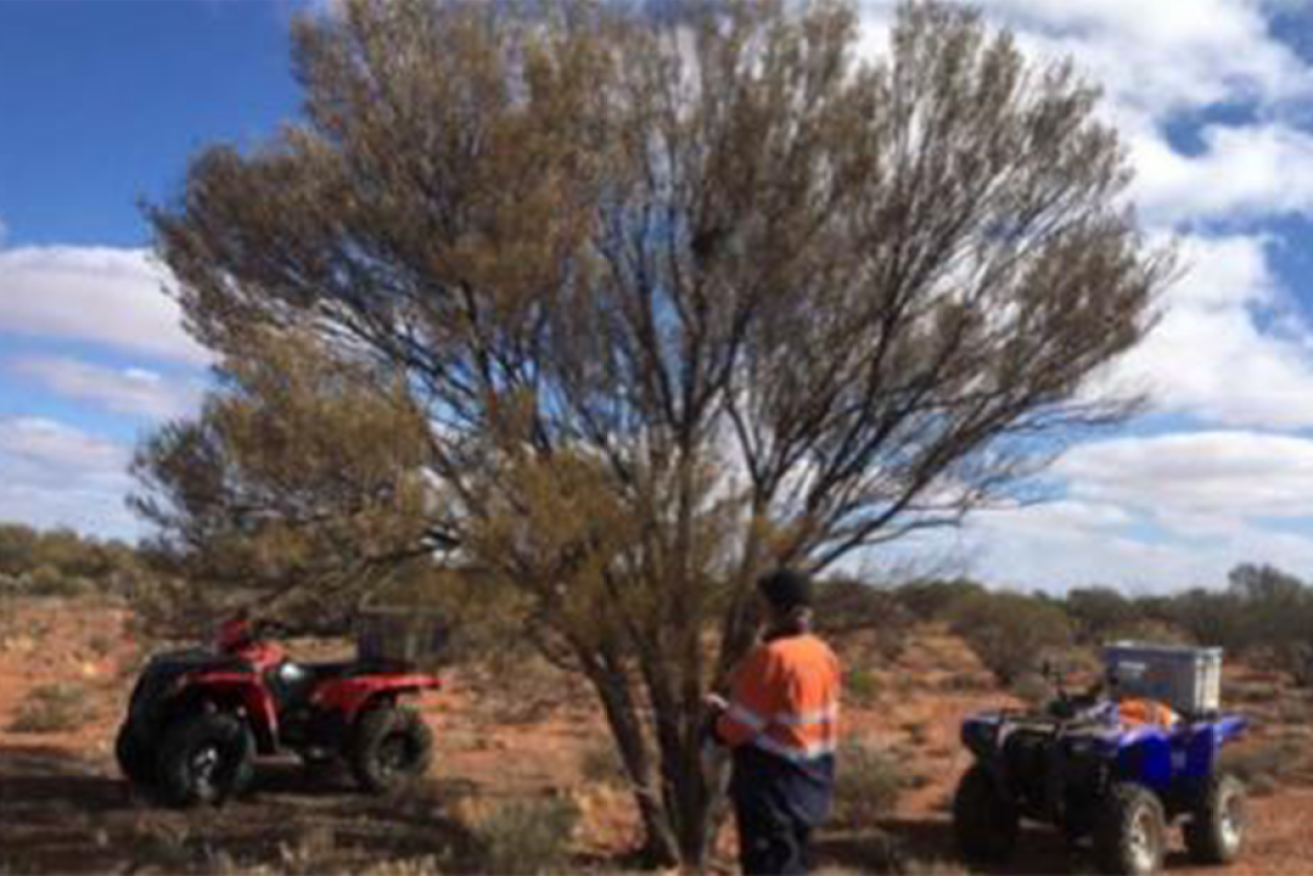Gold leaf technology among exploration grant winners
South Australian drilling company Marmota Limited will use a $225,000 state government grant to ramp up a technique that uses leaf samples from trees to help determine an area’s gold prospects.


Marmota has previously applied biogeochemical sampling – otherwise known as tree leaf testing – to gold exploration at the Aurora Tank in the far north of South Australia.
Developed by the CSIRO, the testing analyses leaf and foliage samples for high mineral levels that could indicate gold deposits below.
The publicly-listed company told the Australian Securities Exchange this morning it had been awarded $225,000 in funding from the South Australian government as part of the Accelerated Discovery Initiative (ADI).
Marmota chairman Colin Rose said the grant would “significantly accelerate our biogeochem gold exploration program and expand its scope”.
On Wednesday, Rose told InDaily the tree sampling would be used in conjunction with the traditional calcrete soil sampling method.
“At each sample location you are collecting data using the traditional method … and also now with the tree sample,” Rose said.
“We want to compare if both are showing up and we’re particularly interested in places where people may have missed something in the past.
“Every method has its advantages and disadvantages; no method works perfectly.
“We believe this is the first time anyone is trying to do tree sampling on a regional basis, rather than just on a specific site.”
Rose said the dual method increased efficiency in the ore industry by reducing the need for drill holes.
He said he expected the project to begin before September and that it would run for at least a year.
It is the latest in a string of announcements from Marmota, which this week reported it would begin drilling at its Aurora Tank in the Woomera Prohibited Defence Area mid-July.
Earlier this month, InDaily also reported the mining company had been prompted to revisit its Junction Dam project, in South Australia’s northeast, following rising global uranium prices.
Rose said it was the first time in more than five years Marmota had begun looking at the uranium assets.
The grant was among a number funding announcements to emerge from the state’s international copper conference Copper to the World Online, which was held yesterday.
Marmota was one of 14 ADI first-round grant recipients to share in $2.9 million. The total accelerated discovery fund is $10 million.
The fund is intended to drive jobs and investment in South Australia’s resources industry.
Minister for Energy and Mining Dan van Holst Pellekaan said the initiative aimed to encourage proposals that contemplated existing and emerging technologies and exploration techniques.
“Our state has developed one of the world’s most sustainable and technologically-advanced mining sectors,” he said.
“Several of the funded proposals from the $2.9 million first round are directed at targets in frontier exploration districts where successful outcomes have the potential to open up new search spaces.
“The South Australian Government is keen to push the boundaries of traditional exploration and may just bring us a step closer to uncovering the next Olympic Dam or Carrapateena-class deposit.”
Other recipients included mining companies Argonaut Resources and Minotaur Exploration, which are both searching for iron oxide copper gold deposits.
Argonaut was awarded $320,00 towards its planned drilling at the Murdie copper project in South Australia’s Eastern Gawler Craton.
The company is exploring for copper mineralisation underneath the surface of Lake Torrens, roughly 400 kilometres north of Adelaide.
A statement from the company said the final approval required to undertake a major drilling program was underway, with a decision expected to be reached in August.
Meanwhile Minotaur was awarded a $300,000 grant for its Peake and Denison project, located 750 kilometres north of Adelaide.
Minotaur said the area was “vastly under explored and new data collected via this next phase of exploration will be of great benefit to the state.”
Want to comment?
Send us an email, making it clear which story you’re commenting on and including your full name (required for publication) and phone number (only for verification purposes). Please put “Reader views” in the subject.
We’ll publish the best comments in a regular “Reader Views” post. Your comments can be brief, or we can accept up to 350 words, or thereabouts.




